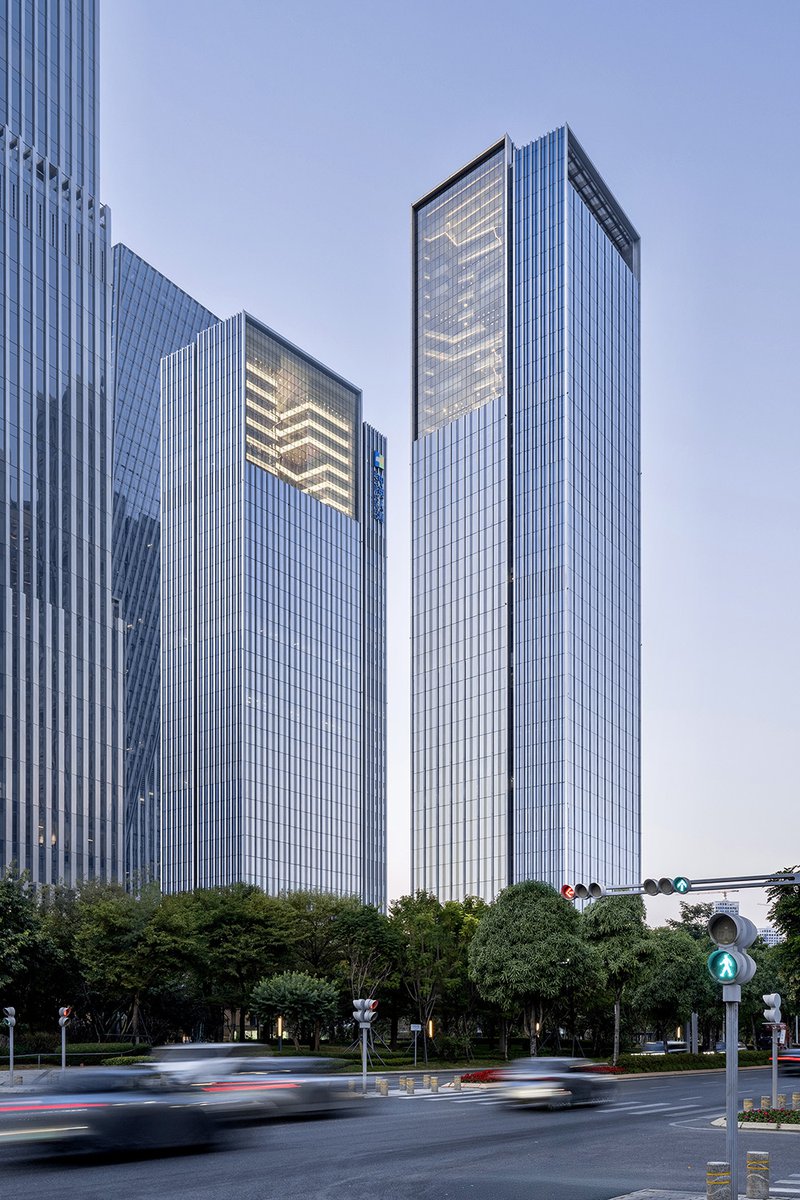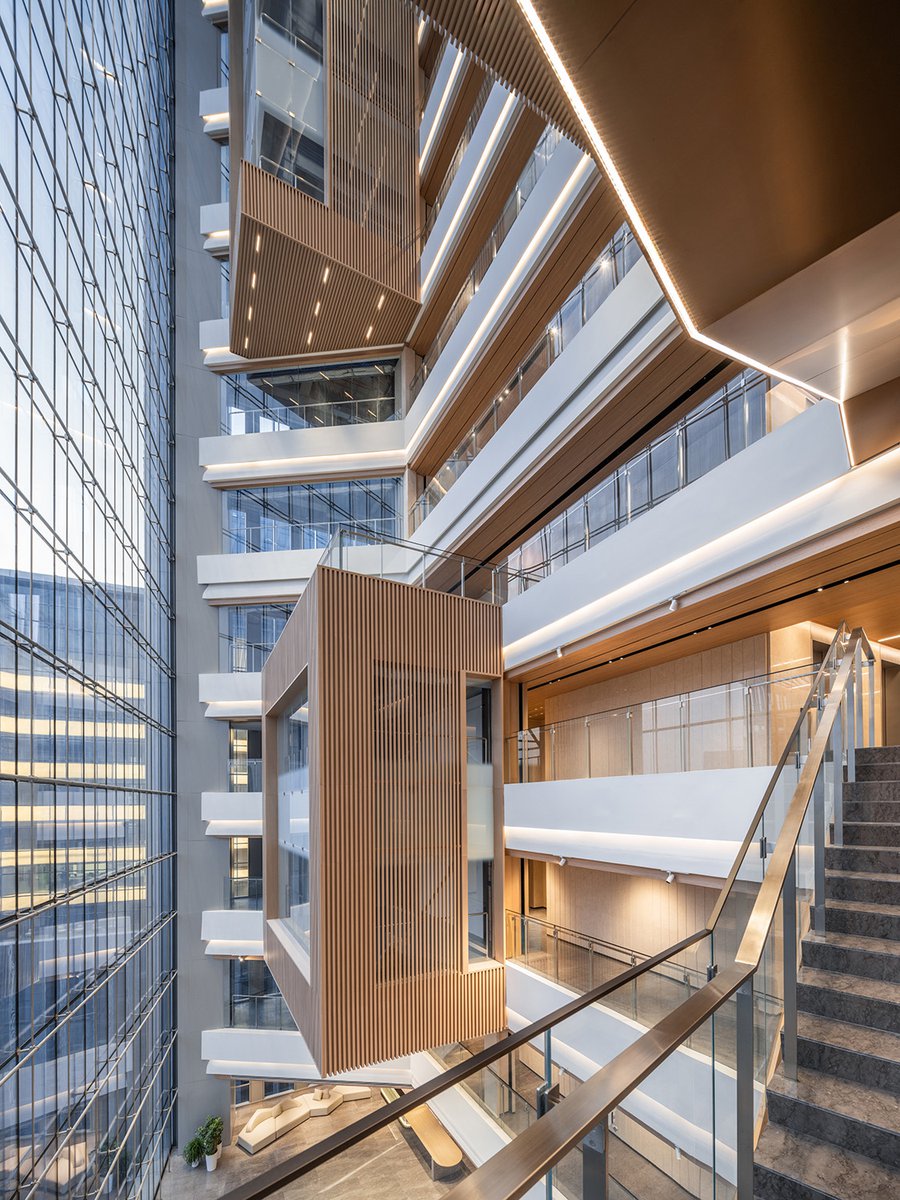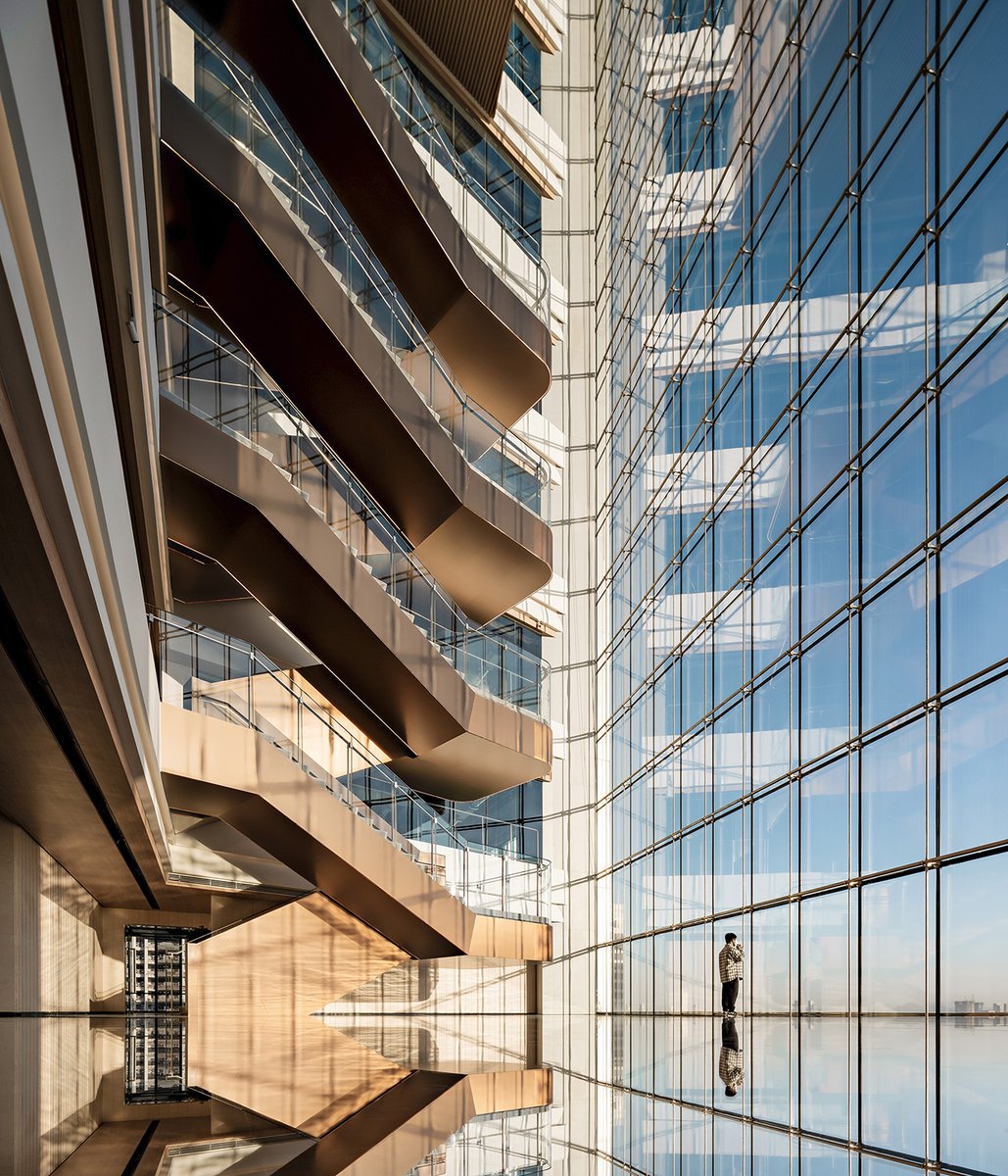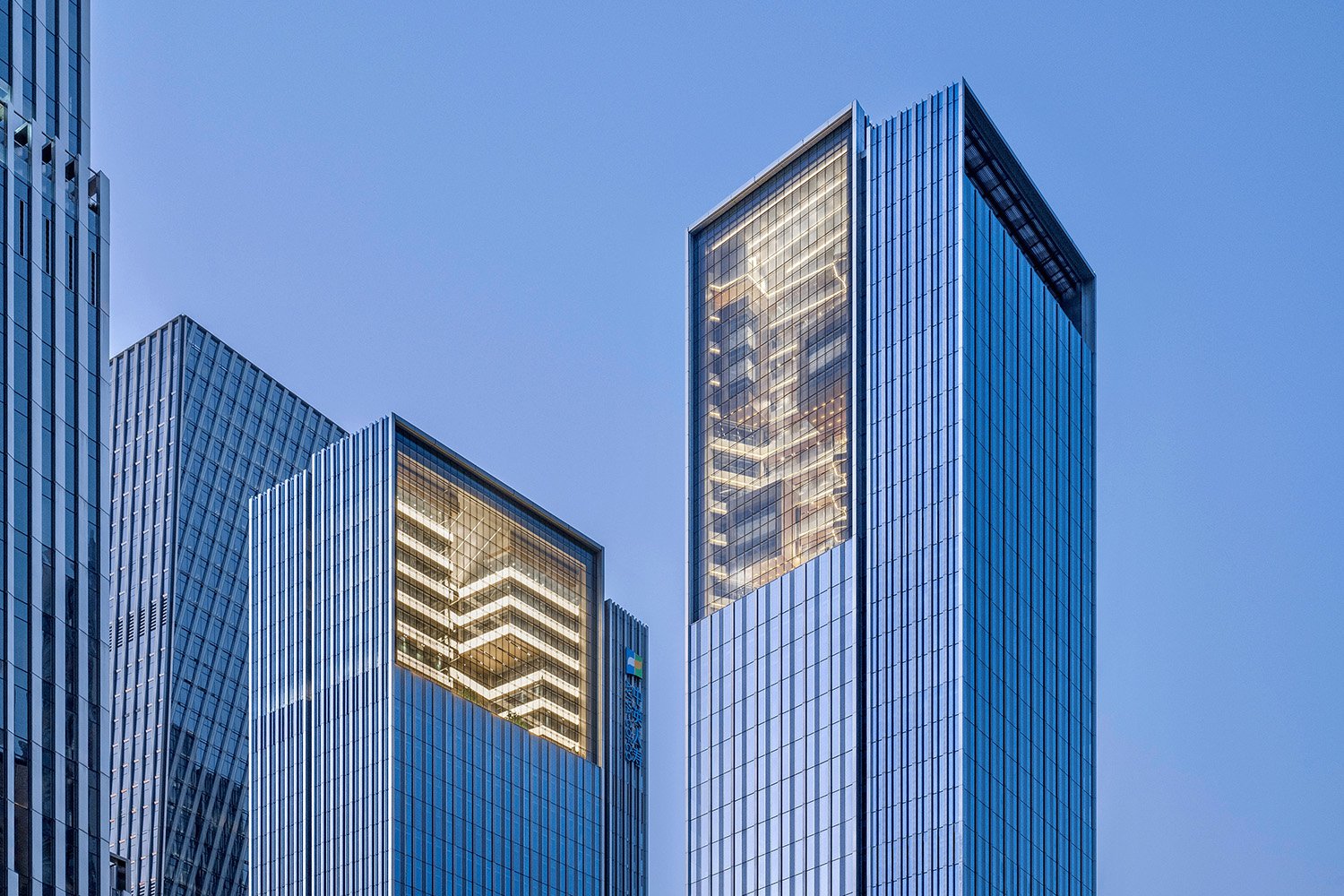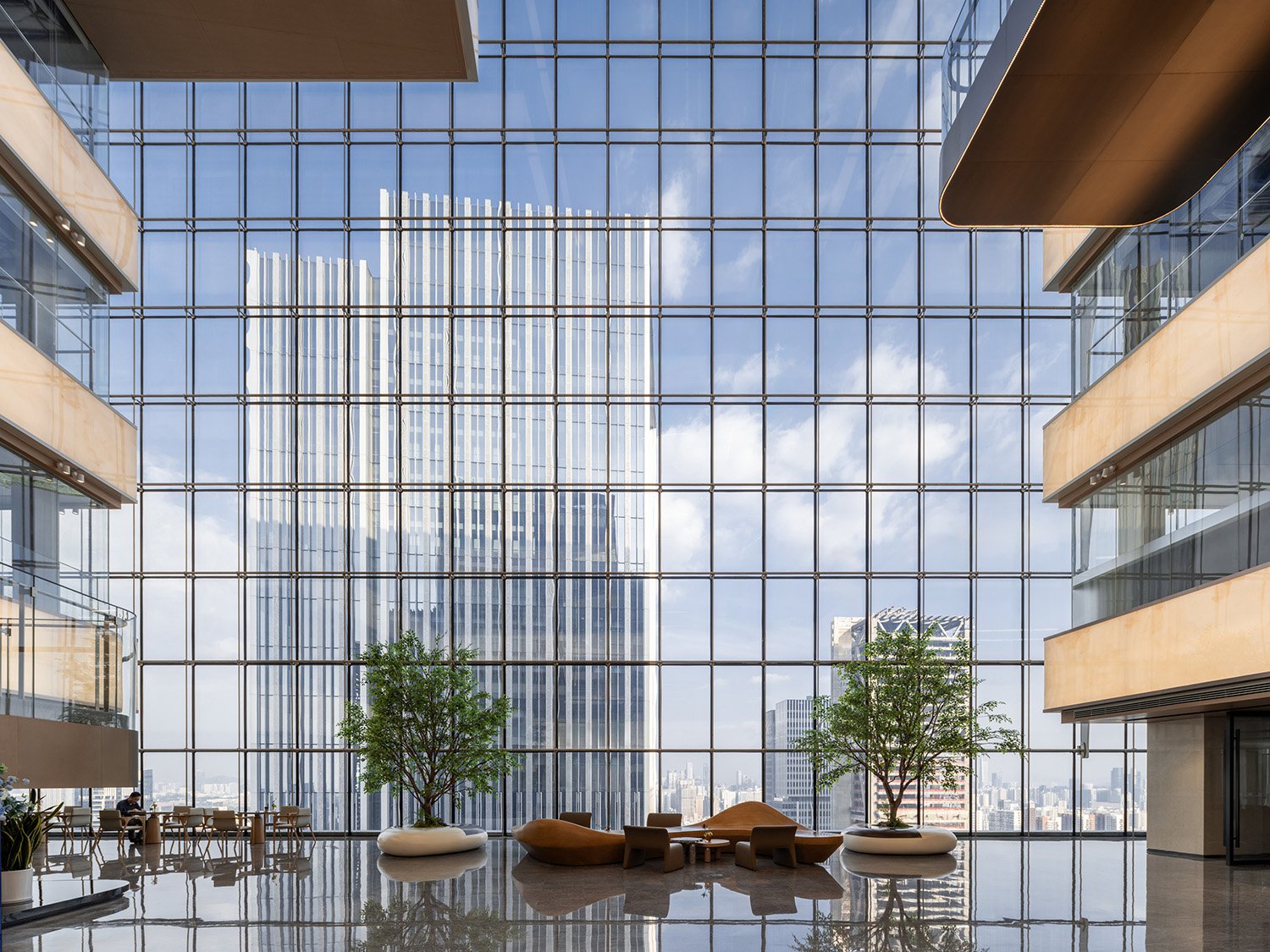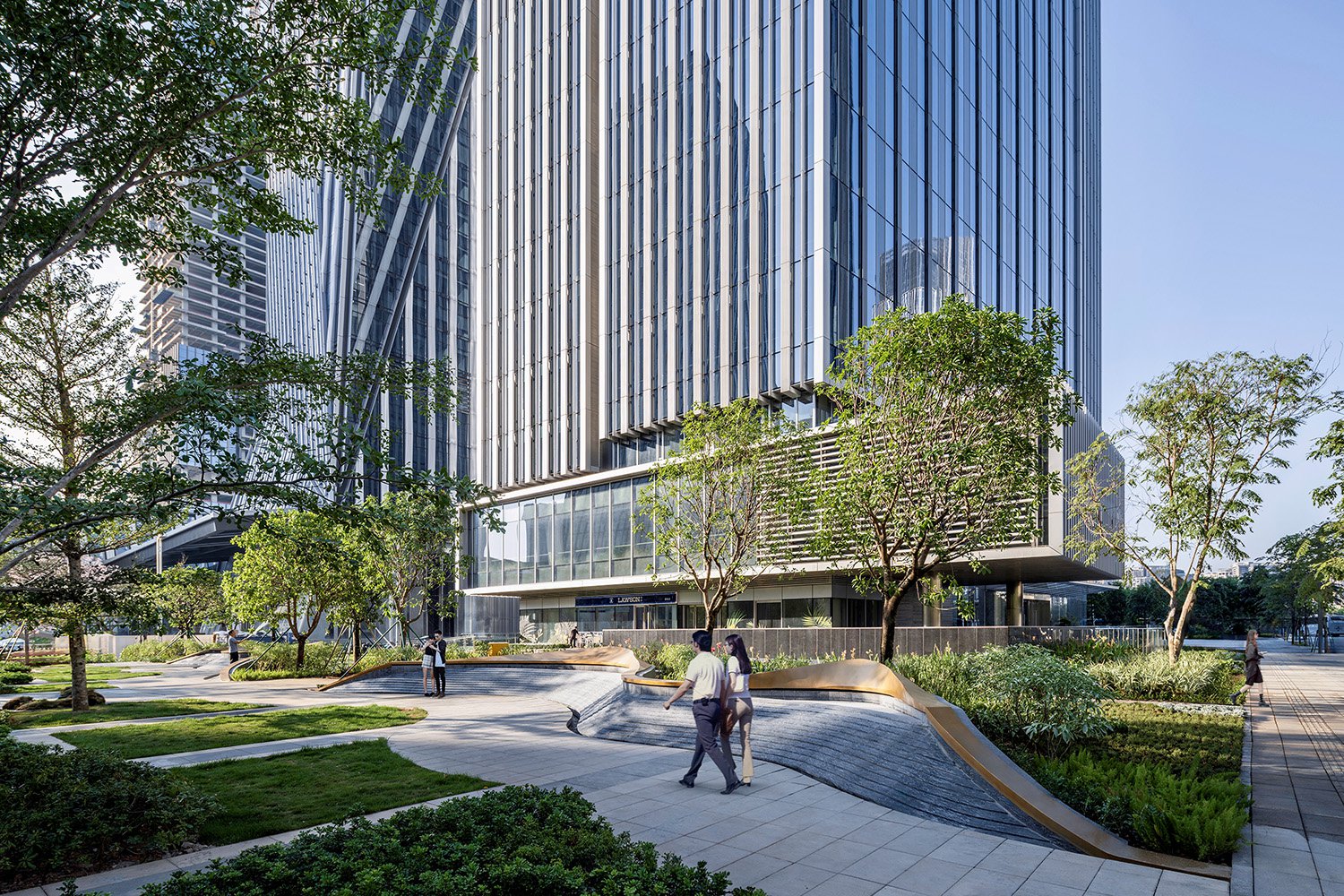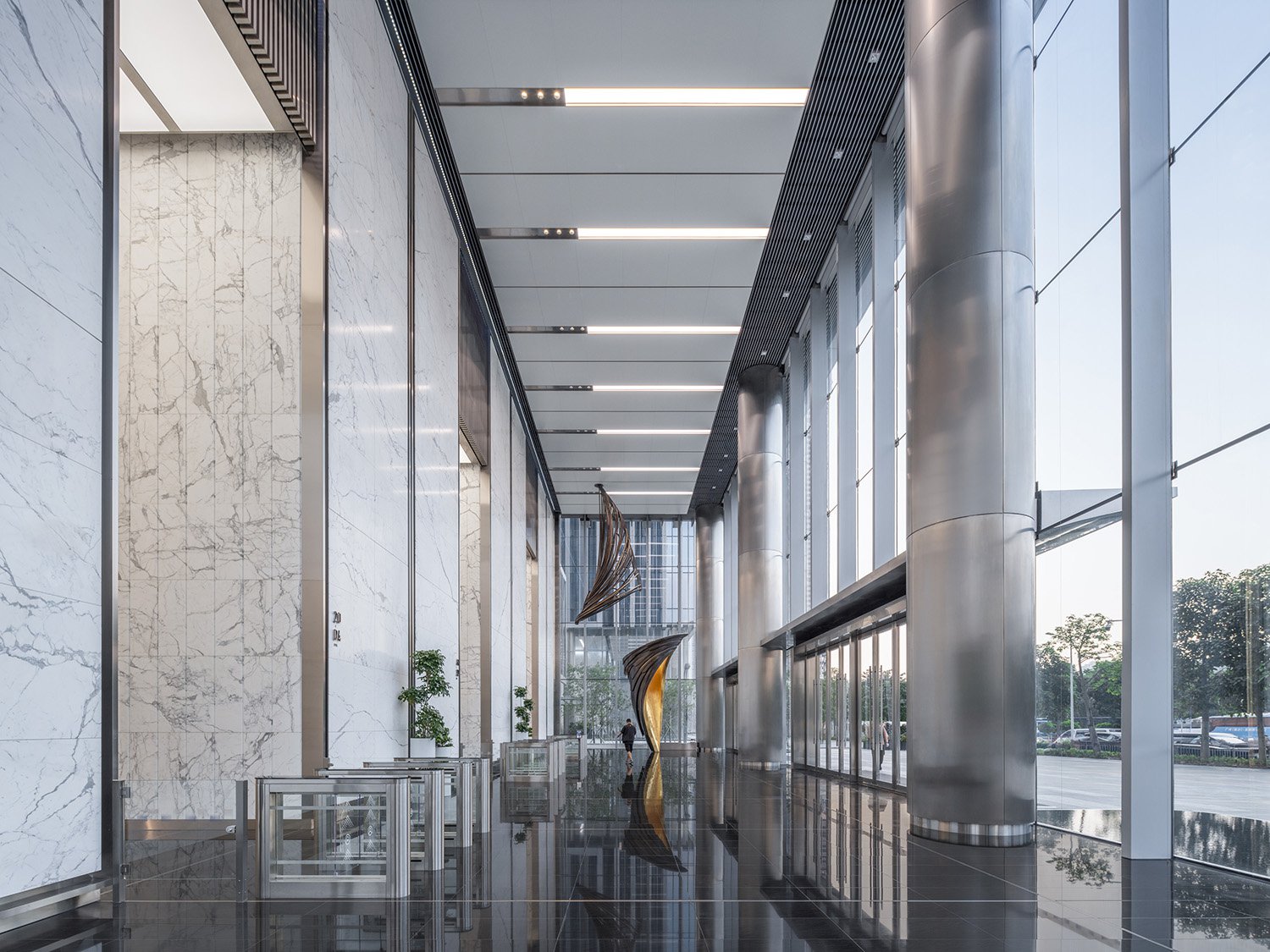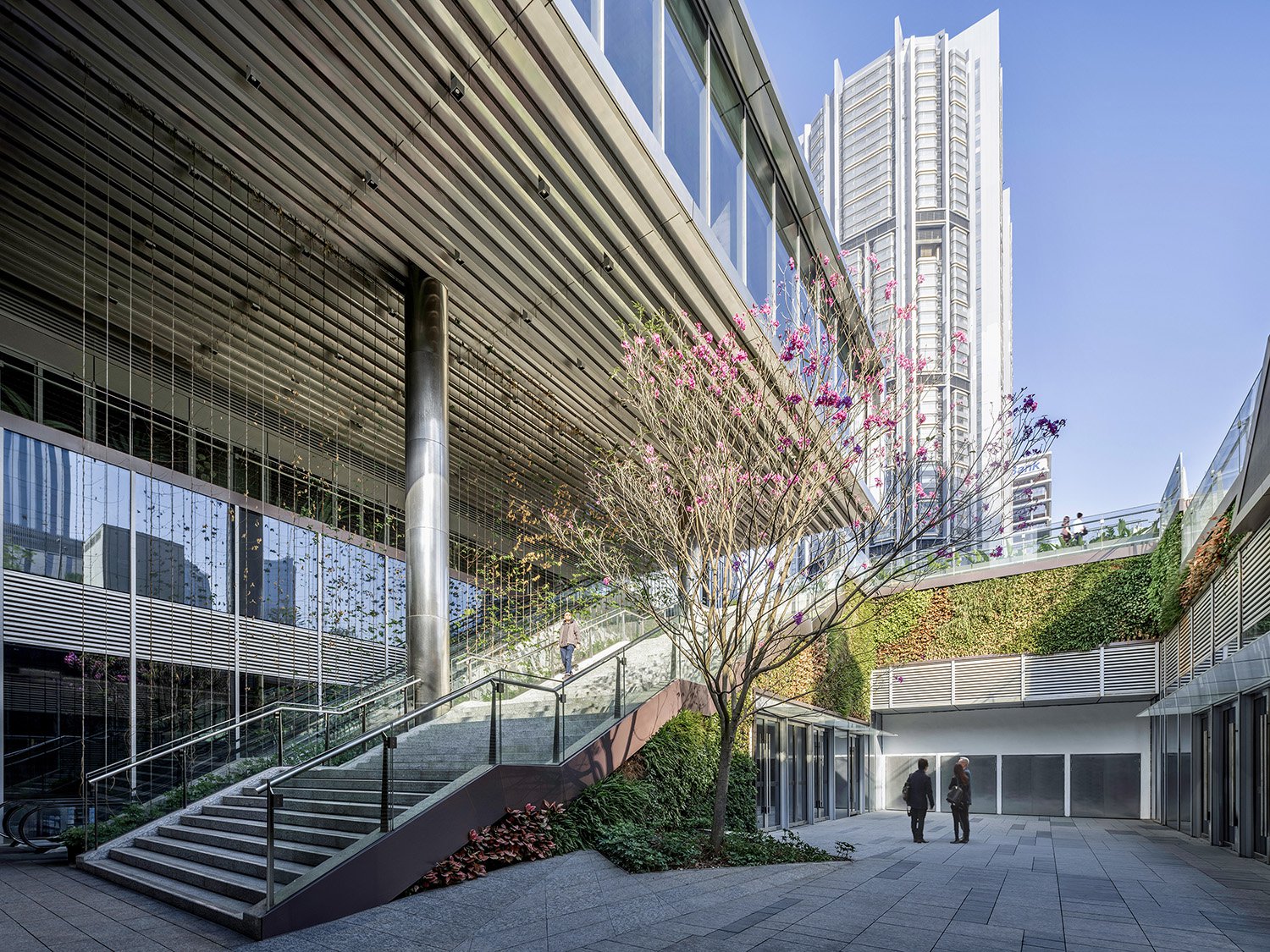Goettsch Partners Completes Dual-Tower Headquarters Complex With Transparent "Sky Village" at the Top
03.26.2025
GP announces the completion of the COFCO Qianhai Innovation Center, a state-of-the-art headquarters and multi-tenant office complex located in Shenzhen, China. This 190,000-square-meter development is defined by two nearly identical towers, each crowned with a large, glass-enclosed atrium. These atria provide unique identities in the skyline for the headquarters of two related companies: COFCO Group and Aviva-COFCO Life Insurance. The respective 200- and 180-meter towers are composed of three slender masses where the upper levels are carved back and exposed to reveal the open atrium and separate outdoor sky terrace that connect to the surrounding cityscape. Sited next to an urban green belt and local park, the towers are oriented to address this context and integrate closely with the natural environment. The buildings are rectangular in plan, with one side tapered to expand views toward Qianhai Bay.
The design of the COFCO Qianhai complex is a reflection of Shenzhen's rapid growth from a fishing village into a megacity of 17 million people. Inspired by the organic development of Shenzhen’s urban villages—where dwelling units stacked over time have shaped the streetscape—the complex’s design features headquarters spaces that function like a connected village in the sky.
The atrium at the top of each tower serves as a dynamic, flexible space that unifies the building's headquarters floors. These atria feature interconnecting stairs, open corridors and meeting rooms that encourage formal and informal collaboration among employees. The grand spaces can also host large company-wide events. Each atrium is entirely clad in a highly transparent cable wall, blurring interior and exterior space, and visually linking the sky villages to the traditional urban villages at the street level.
“The COFCO Qianhai complex sets a new standard for urban headquarters, especially in China,” said James Zheng, AIA, LEED AP, CEO and president of GP. “The design pays tribute to Shenzhen’s origins while reinforcing its global ambitions with a strong visual identity.”
The cable walls are a key engineering innovation, offering a dynamic component that adapts to external forces and internal stresses. Unlike conventional static facades, the cable system uses outward-angled columns to support horizontal cables, which are reinforced by each floor slab back to the core. The vertical cables are engineered to flex, absorbing and distributing loads, ensuring stability under varying conditions—including seismic events.
The towers feature operable windows for natural ventilation, reducing the need for mechanical cooling systems. Double-laminated low-E glass, combined with ceramic frit coatings, minimizes solar heat gain and enhances energy efficiency. Additionally, the air circulation system within the atria draws cool air from the ground level and channels it upward, creating a passive cooling effect that helps maintain a comfortable indoor environment, even in Shenzhen's warm, humid climate.
“The facades strike a balance between aesthetics and functionality, a crucial consideration given Shenzhen’s subtropical climate,” said Travis Soberg, AIA, LEED AP, principal and director of sustainable design at GP. “The elegance of the design was made possible by a team of designers and engineers working in close collaboration to deliver both beauty and performance.”
The complex’s ground level incorporates sustainable features, designed as a “sponge city” to absorb rainfall. Permeable surfaces and strategic landscaping help manage stormwater, reducing urban runoff and minimizing flood risk. A sunken garden and pedestrian-level greenery further connect the development to its natural surroundings.
By combining innovative design, sustainable practices and cutting-edge engineering, the COFCO Qianhai complex establishes a new paradigm for modern Shenzhen. Its “sky village” concept promotes community and connectivity, transforming the high-rise workplace into a more human-centric environment. This development supports Shenzhen’s vision to become a global leader, inspiring future projects that prioritize community, sustainability and technological advancement.
